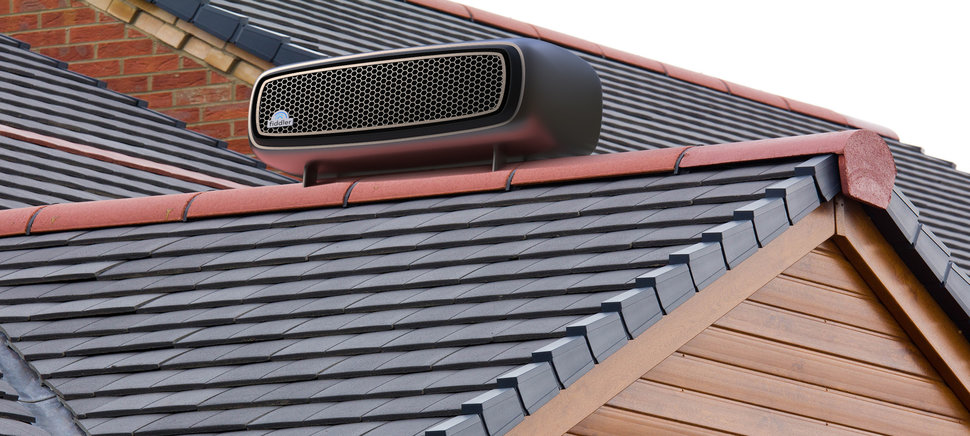When you hear the word “fiddler,” chances are you think of a folksy violinist or perhaps even a particular hit musical — not a domestic wind turbine invented by college students. But that’s the name of the device developed by SMU seniors Jonah Kirby, Brendan Celii, Luke Oglesbee, Cameron Buller, and Alec Siems.
Here’s the elevator pitch: Fiddler, the group says, is “the first smart-connected wind energy source for the modern home.” And it’s true, they have designed a turbine that mounts on the top of your roof, using the angle to “speed up” oncoming wind and generate power. It’s also connected to a battery pack mounted inside your home and a mobile app that tracks the usage of both. But that’s not all they’ve built — there’s also a “smart grid” that aggregates stored energy and sells it back to electric companies when prices are high, which ends up being more cost-efficient for the consumer.
“The electricity grid in America is broken,” Kirby says. “We’re able to use all of our customers’ collective battery resources and sell their energy back to the grid when prices peak.”
“The electricity grid in America is broken,” Kirby says. “We’re able to use all of our customers’ collective battery resources and sell their energy back to the grid when prices peak, and that gives us the ability to pay our customers every single month and save them money from the turbine.”
According to Fiddler’s website, the average American household produces 44 metric tons in carbon every year. That’s the equivalent weight of 24 cars—which would take the green power of more than 2,000 trees to counteract. Fiddler’s founders claim the device can help save up to 50 percent on energy bills and reduce an individual’s carbon footprint by the same amount.
“In order to save the environment, we’re going to have to make a lot more creative ways of reducing carbon emissions,” says Oglesbee, who focuses more on the business management aspect.
Kirby, who’s had a longtime passion for researching wind energy, developed the first prototype during his freshman year. Like any good engineer, he assessed its flaws and kept working. Then he brought on his teammates for their senior design project under the direction of clinical professor Mark Fontenot. Buller says this is the first time the school has allowed students to submit their own ideas for projects.
“You always run into so many obstacles that you didn’t know were there, but it’s been a fantastic learning experience,” Buller says.
“You always run into so many obstacles that you didn’t know were there, but it’s been a fantastic learning experience,” Buller says.
The group of young entrepreneurs — which encompasses majors such as mechanical engineering, electrical engineering, computer science, and statistics — has already garnered quite a bit of attention for their work. Kirby gave a speech at the 2015 TEDxSMU, cleverly titled “Gone With the Wind,” and has more recently pitched at the Dallas Festival of Ideas as part of SMU’s Big iDeas initiative.
The group was also recognized by The Huffington Post in their roundup of 15 top college entrepreneurs. Forbes similarly named Fiddler among “the 15 most innovative startups from 15 different colleges” following the RECESS festival, where the Fiddler guys also made their pitch. But it’s the sheer experience of exploring their own designs and business acumen that’s the real heart of it.
“I’ve made designs that no one else has made,” says Celii, whose main involvement lies in the technical engineering.
Right now, the team is working on attracting investors, building partnerships, and continuing to work with advisers. They’re building a partial roof in the lot next to Kirby’s parents’ house to test their prototype and collect data. Next month, you can find them at Earth Day Texas April 22-24 at Fair Park.
For a daily dose of what’s new and next in Dallas-Fort Worth innovation, subscribe to our Dallas Innovates e-newsletter.
































